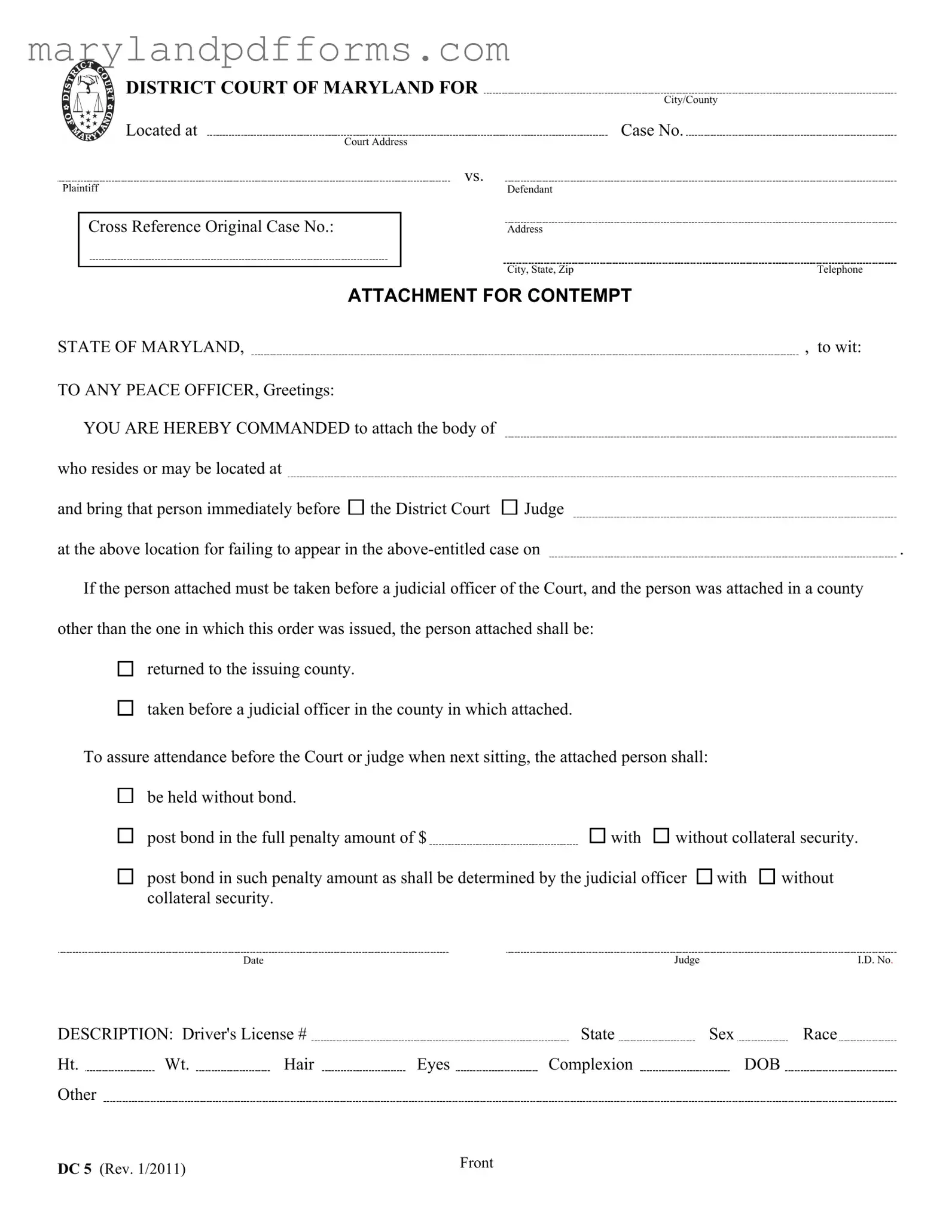Blank Dc 5 Maryland Template
The DC 5 Maryland form is a legal document used in the District Court of Maryland to command the attachment of a person who has failed to appear in court. This form outlines the necessary details for law enforcement to bring the individual before a judge, ensuring compliance with court orders. Understanding the purpose and procedure of this form is crucial for those involved in legal proceedings in Maryland.
Ready to take action? Fill out the form by clicking the button below.
Fill Out Dc 5 Maryland Now
